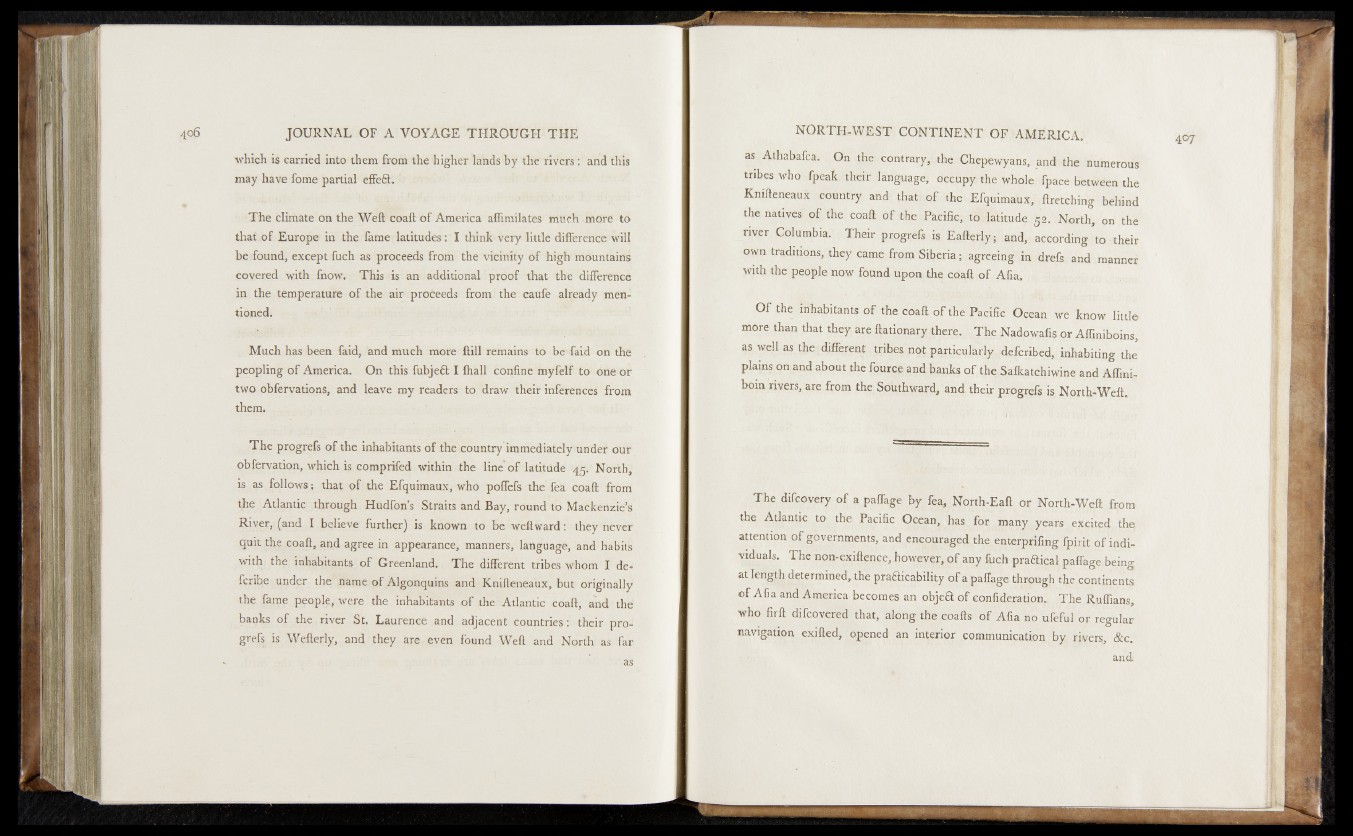
which is carried into them from the higher lands by the’rivers: and this
may have feme partial efFefii: %
The climate on the Weft coaft of America affimilates 'mtich .mbr6;to
that' of Europe in the fame latitudes: I think very little differetfc'e^Will
be found, except fuch as proceeds from' the vtcfertly of high mountki#4
covered with Glow. This “is- an: additional: proof that the ‘difference
in the temperature of the air proteeds from: the caufe already .mem
tioned;
Much has been faid, and much more ftill remains to be'faid-'oh the
peopling of America. On this fubje&I fhall confine myfelf to’-biie'or
two obfervatipns, and leave my readers to draw their inferences from
them. -
The progrefs of the inhabitants ofthe.country immediatelyondef out
phfbfyatioii, which is comprifed within the North,
is as follows ; that of the Efquimaux, who poffefs the fea coaft from
the Atl^tic through Hudfons Straits and Bay, round to Mackenzie’s
River,: (and I believe further) is known to be weftfoard: they nevef
quit the ,coaft, and agree in appearance* manners, language, and habifk
with' the inhabitants of Greenland. The different tribes whom I de*.
fcrib,e under the name of Algonquins and Knifteneaux, but originally
the f^rpy people, »were | the inhabitants of the'Atlantic coaft, and the
bapks of the . river St. Laurenee .and adjacent countries their pro-
grefs. is Wefterly, and they are , even found Weft and North- as far.
as,Athabafca. On the*contrary,ithe,;Chepewyahs, and. the numerous
tribes whdéfpeafofthrir fangUagdf';dcSpy the^halekpac.e between the
.Knifteneaux .ibmqtóy and ^ < # * ’hS^fquimaux, fetchin g behind
the,natives!,of tle^c< a a ft-,ö .fTacifi^^t^titudoifa^Nort^.'pn thé
river Columbia?, ^Theirï p^qg^jb isEafterly,;- and,, according to their
QWU tra.dmqijsilhey'%mff,frprn Siberia;, agreeingrin?drqfs and manner
jvith; the 1 people now feund ^pon the abaft soft Alias tu
Of the Inhabitants o f the coaft b fW e % A Ocekn we know little
more than that they are Actionary < th p ;y j^ or Affiniboins,
& well a$ the | different t|ihe& pqt particulai;|y!fdefcribed, inhabiting the
plains omand abqut tfie fqurcp and banks of the^afeatcljiWnO and Affini-
boin refers, are from the Southward, and their progrefs is, North-Weft*
The difco-very of a paffage by fea, NqrthrEaft or S g B g g k from
the Atlantic to the- Pacific Ocean,
atten|ion p f gqvernments, and encouraged, the. enterprifing/piritaf mdl-.
vid“ afe The hon,-exsiftence, howqy^qf.any fuch pra^jca^^ffugeibeing
at length determined, the practicability of a paffage through the continents
° f Aha and America becomes an obieCt of eonfidqratjon.. ,The Ruffians,
who firft difcoverkd that, along,the coafts'Af Afia>o ufeful or regular
navigation exifted, opened an interior communication, by; rkers &c.
and